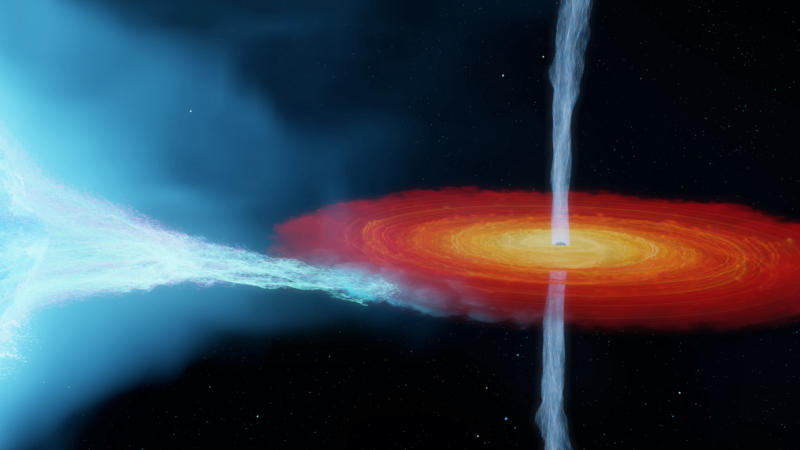A small fraction of known black holes emit X-ray signals that resemble the human heartbeat. Chinese scientists in a new study may have found an explanation for this strange phenomenon.

Absorption of matter by a black hole in the Cygnus X-1 object. Image source: icrar.org
Black holes, although not living objects, can have their own heartbeat if they consume large volumes of gas. And the authors of a new study tried to understand this process. When a black hole is in a binary system, that is, sharing an orbit with a star, it pulls gas from its companion. When this happens, the gas is compressed and heated to extremely high temperatures, emitting intense X-rays. This process, for example, helped identify black holes in Cygnus X-1, one of the brightest X-ray sources in the sky.
During this intense absorption of matter, which can last for thousands or even millions of years, a colossal ejection can sometimes occur – a sudden X-ray burst caused by the rapid consumption of huge amounts of matter at one time. Built into such a burst is a regular pulse of activity, which scientists compare to a heartbeat because its pattern resembles a human ECG, with a slow rise, a quick decline, and then a return to normal.
Astronomers at the Key Laboratory of Particle Astrophysics at the Chinese Academy of Sciences in Beijing have studied the latest such flare and described the process that may be fueling it. This flare was produced by the black hole IGR J17091-3624 at a distance of 28,000 light years from Earth – data were obtained using the Neutron Star Interior Composition Explorer (NICER) and Nuclear Spectroscopic Telescope Array (NuSTAR) telescopes in 2022. In the bright flash, astronomers found clear evidence of a signal similar to a heartbeat. By studying its properties, they came to the conclusion that these types of pulses are caused by interactions and instabilities in the matter that surrounds the black hole.
When matter falls into a black hole, it compresses and forms a thin disk that spins rapidly. The inner edge of this disk is tilted towards the event horizon, and the rest of it glows in the X-ray range. Instability is formed – the radiation from the disk interacts with the gravity of the black hole. When a heartbeat occurs, the disk fragments, loses connectivity, and a large clump of matter rushes toward the black hole. It produces intense radiation, which turns out to be the beginning of a heartbeat. This radiation heats the gas, which temporarily prevents it from falling. The gas then calms down and the process repeats, setting the stage for another heartbeat cycle. Such signals are extremely rare – only two black holes have shown them – but scientists hope to continue studying this phenomenon, as it provides valuable information about the connection between black holes and their surroundings.